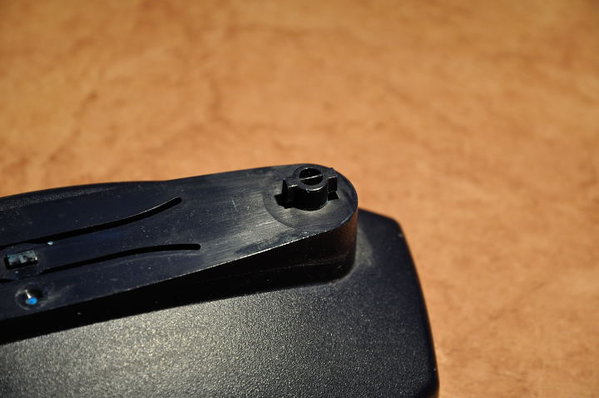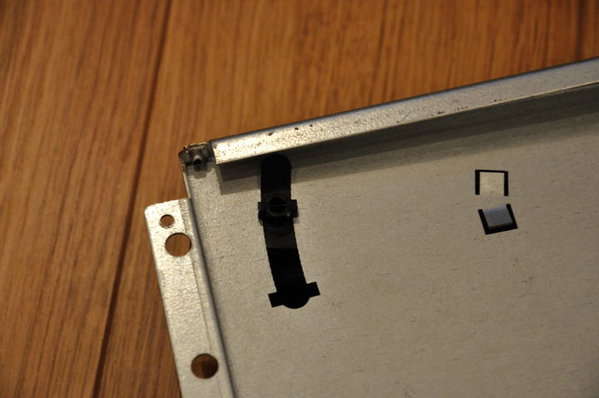Attachment:
This is an Origin 200. I thought I'd start with a picture of what one of these is supposed to look like.
 Because of the ridiculously fragile skins, most of them look a
little
different... search eBay.com if you know what I mean.
Because of the ridiculously fragile skins, most of them look a
little
different... search eBay.com if you know what I mean.
Attachment:
This is a detail of an Origin 200 foot. The foot itself is ~ 1mm thick ABS plastic, the little knobs are all there is to fixate the 25kg system. Brilliant design ... not . That's why most of them look like this:
Attachment:
Believe me, I'm very careful and protective of my systems, but this is just too much. It's like balancing a 19" rackmount server on 4 crystal glasses -- no matter what you do, you will loose.
Here's how I fixed the feet. Carefully drill a 5mm hole though the broken knob. Flatten the remains of the knob to roughly the thickness of the bottom plate of the Origin. Now it looks like this:
Attachment:
Now you can put an M5 * 15mm bolt (with a washer) through the foot. Use a washer and a self locking M5 nut on the other side. Much more solid than the original design!
Attachment:
Finally, a shot of the last original knob left in my Origin 200:
Attachment:
Really, what were they thinking??
I should have just reworked that one too, but I couldn't. Of course I'm going to pay dearly for this mistake because it will self destruct in a year or so, and then I'll have to take the front off (which will splinter into many fragments when I do) in order to remove the bottom plate. The front door is an even bigger catastrophe then the feet

_________________
Now this is a deep dark secret, so everybody keep it quiet

It turns out that when reset, the WD33C93 defaults to a SCSI ID of 0, and it was simpler to leave it that way... -- Dave Olson, in comp.sys.sgi
Currently in commercial service:

 (2x)
(2x)

In the museum : almost every MIPS/IRIX system.
Wanted : GM1 board for Professional Series GT graphics (030-0076-003, 030-0076-004)



















 <- MicroVAX 3500
<- MicroVAX 3500
 <- MicroVAX 3300
<- MicroVAX 3300




